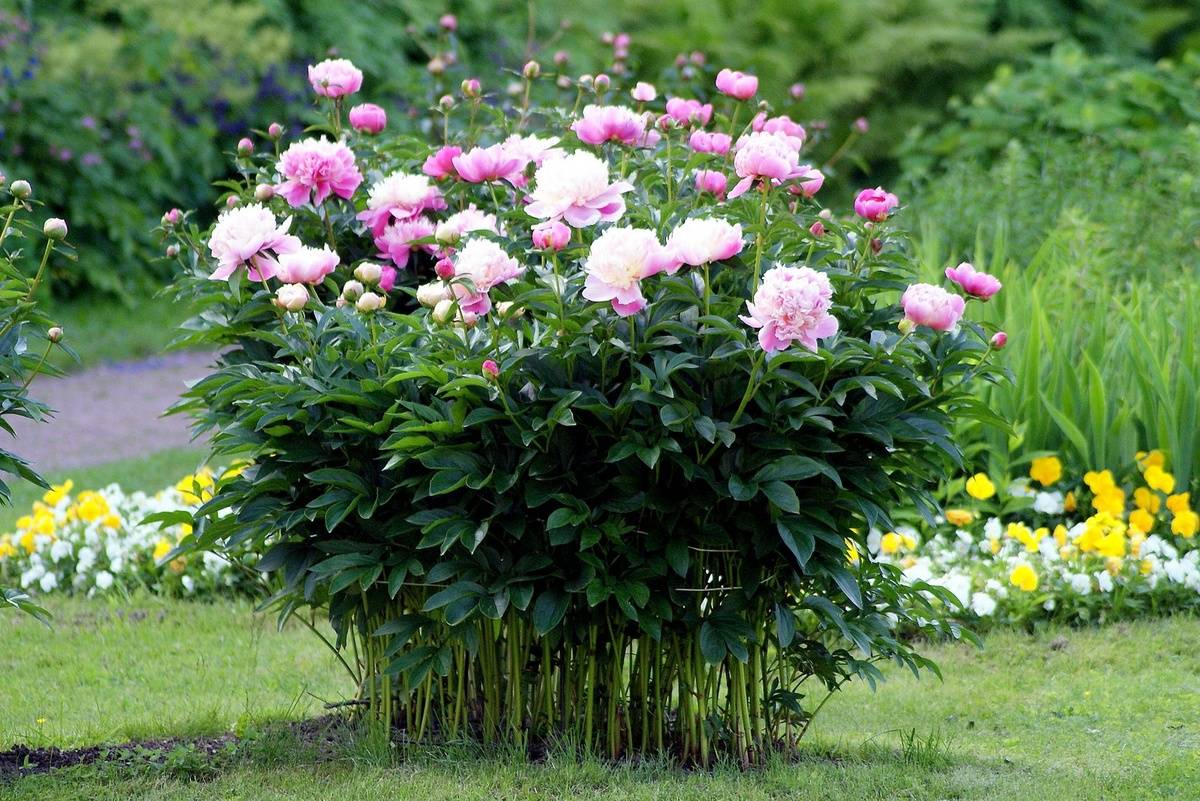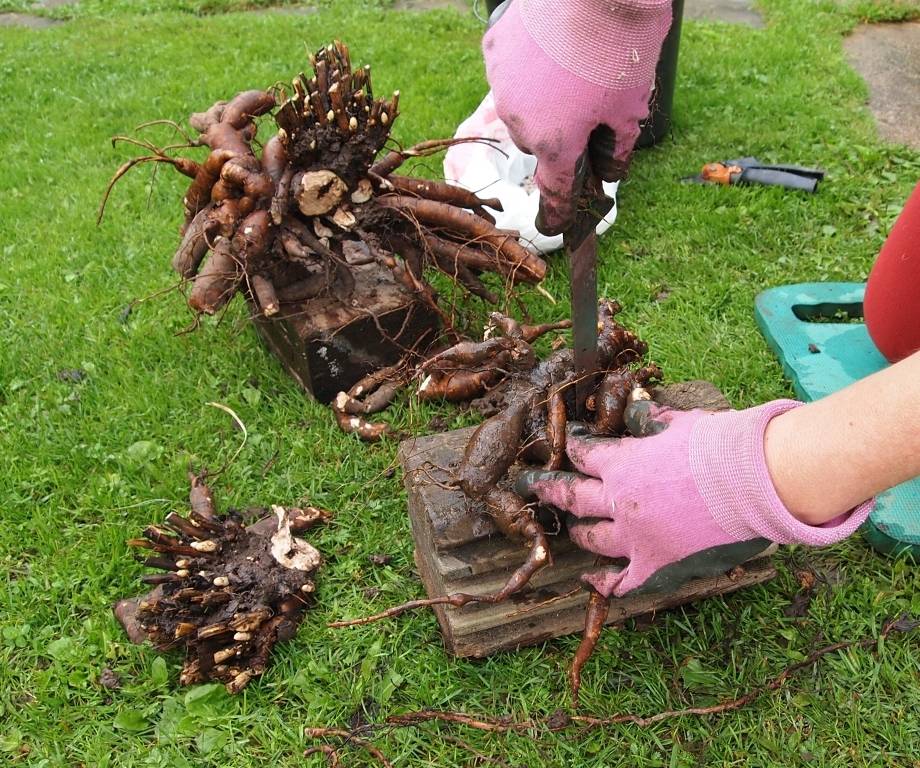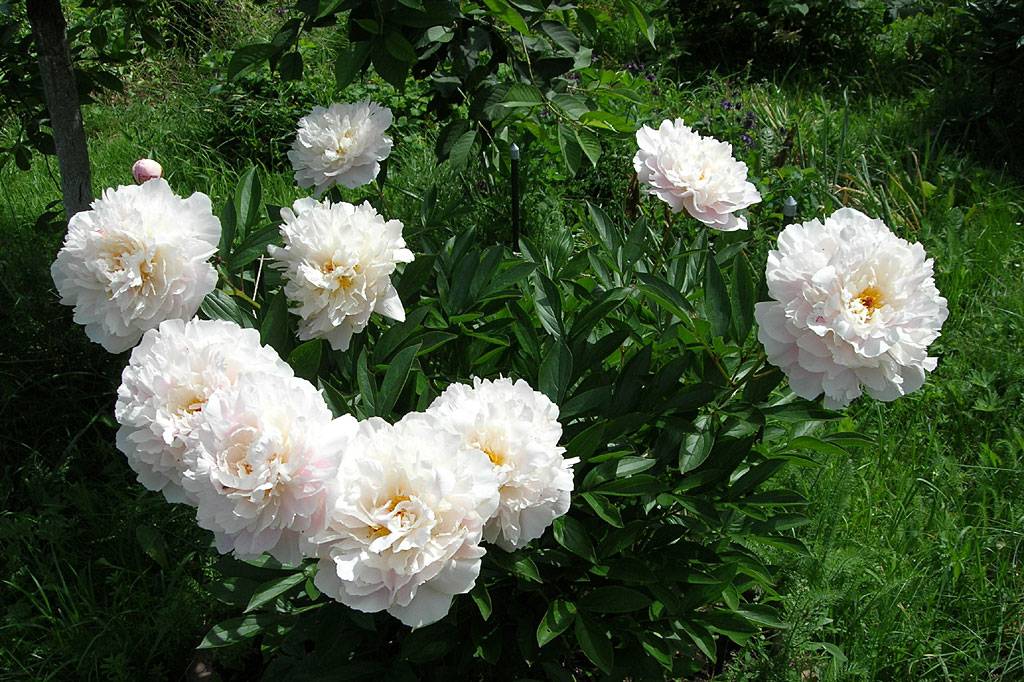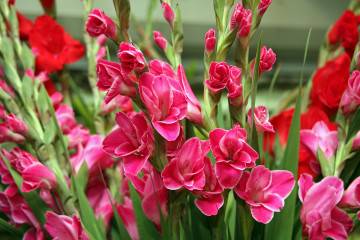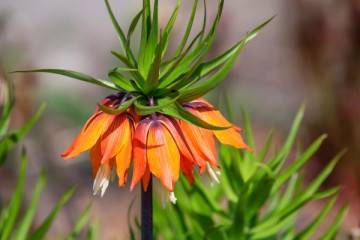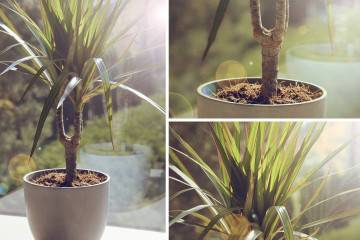How to transplant peonies, and how to plant them in spring
Content:
Peony is one of the most popular flowers grown in flower beds. In modern floristry, this flower is in great demand - it is used both in bouquets and for decorating wedding ceremonies, banquets and photo sessions. For flower growers, the peony is a real find, because, despite its beauty and lush flowering, it is completely unpretentious. One of the few questions that growers often ask is when and how to transplant peonies.
How to transplant peonies and when is it better to do it
If initially the place for planting the peonies was chosen correctly, then the transplant will not be needed for a long time. Flowers will actively grow and develop, bloom magnificently and delight the gardener.
But there are a number of signs by which it becomes clear that it is time to transplant the flower:
- The splendor of the bush. Peonies develop annually, grow, multiply and gradually begin to interfere with the development of plants that grow nearby. The bush itself also becomes cramped, because of this, problems with flowering arise. Therefore, overgrown plants need to be planted. The best option that will contribute to reproduction is dividing the bush.
- Long growing season. If this problem appears, a transplant is needed. The problem of slow growth and development of a plant can be associated with both diseases or pests, as well as with the usual lack of nutrients in the soil or choosing the wrong place.
- New preferences of florists. Often, the flower bed is moved to a new location in accordance with the redevelopment of the site.
How to transplant peonies in spring
If necessary, you can transplant peonies in autumn, summer or spring. The spring transplant is done very carefully. It is also important to choose the right time. It is optimal to carry it out immediately after the snow melts and when the temperature is not higher than + 10 ° C, until the ground part begins to develop. For Central Russia, it is better to choose the beginning of April (no later than the middle of the month).
A step-by-step guide on how to plant peonies in spring is as follows:
- Dig a trench at a distance of 30 cm from the bush. If the plant is 5 or less years old, a shovel will do, but for centenarians you will need a scrap.
- Remove the top layer of soil and use a pitchfork to pull out the bush without affecting its shoots.
- If necessary, you can manually remove excess soil from the tuber.
- Remove damaged parts of the root.
- Divide tubers if necessary. They should be approximately the same so that the new plants feel comfortable and do not die.
- Treat all cuts with chopped charcoal.
- Plant the prepared tubers in a new, pre-prepared place, carefully straightening all the roots.
In order for the peonies to take root well, you need to choose the right place for them:
- well lit;
- a good drainage layer is required at the bottom;
- lay nutrients in the ground;
- before planting, the soil must be thoroughly watered;
- after planting, the surface must be mulched with hay.
Further care for peonies that are transplanted in spring is to periodically monitor their development. It is useful to feed the plants during this period.
How to transplant peonies in the fall to a new place
Autumn is the best period for transplanting peonies. At this time, the growing season and flowering ended, the plant has accumulated enough nutrients to survive the winter calmly. Autumn is suitable both for simply planting these flowers in a new place, and for propagating them by dividing the tuber. A transplant during this period of the year also has some nuances.
How to plant peonies in the fall to be sure of the result:
- Cut off the aerial part, leaving only 5 cm of the stem.
- Dig out the bush carefully. If you only have a shovel in your toolbox, you need to be especially careful and dig up the bush along with a large earthy clod. Otherwise, there is a risk of cutting off the side roots or tubers.
- Prepare the tubers for transplanting and transplant them into a pre-prepared hole. The distance between the holes must be at least 50 cm.
- The depth of the hole for a large plant should be about 80 cm.For young plants, 50 cm is enough.
- Put a layer of drainage on the bottom of the hole and apply fertilizer. Plant the tubers in pre-moistened soil. Water again after planting.
In the fall, it is customary not only to transplant, but also to propagate peonies. In order not to harm them, you must follow the following rules:
- Rinse the rhizome with running water with low pressure. To better wash off the soil layer, you can pre-soak the tubers in a container of water for 30 minutes.
- Leave the roots in a shaded place for a day.
- Divide the tuber into pieces of approximately the same size using a knife inserted in the center or a small peg. Fission should only take place along natural fault lines. There should be no additional damage.
- Remove all rotten, dried, blooming, non-viable roots.
- For disinfection, hold peony tubers in a solution of potassium permanganate, sprinkle with crushed charcoal or a special agent purchased at a flower shop.
Reproduction of peonies by seeds at home
In addition to peonies grown outdoors, there are indoor peonies. They are created for those who want to decorate not only a personal plot, but also a living room with these plants. Home varieties are undersized, require more careful care than garden varieties. But if you follow all the rules, then at home you can achieve their lush flowering.
Homemade peonies are often grown from seeds, but this method is rarely used for garden flowers. For some varieties, seed propagation is very problematic.
For example, the Gardenia lactic-flowered peony, the Kelweiss Gloriosa peony or the terry varieties produce a small amount of seeds. In addition, many of the traits of the mother plant may not be transmitted by seed propagation. In the case of the Gardenia peony, the daughter flowers do not inherit color saturation, and the doubleness is also rarely seen when grown from seed.
Peony seeds: how to grow at home
If, nevertheless, a decision has been made to grow peonies from seeds, you should not buy planting material in the store. The seeds are collected in the garden.They must be immature so that the shell does not have time to become too hard.
Seeds are planted immediately so that they do not have time to dry out. If this is not possible, then the seeds are stored in the refrigerator in wet sand for no more than 1.5 months. If the decision is made to grow immediately after collection, then the collected material is sown in a container with wet sand to a depth of 5 cm.
Seeds go through two phases of germination: warm and cold. During the warm phase, containers with planted seeds are kept at a temperature of + 30 ° C around the clock. To do this, they can be placed on a battery or a special heater. The sand should always be wet. This phase will last about two months until the shoots appear.
After that, they pinch the first roots and plant them in peat pots. Next comes the cold phase. It lasts about three months before the seeds germinate. Constant humidity is maintained. The pots are covered with a fabric that allows light to pass through. At a temperature of + 8 ° C, a growth point forms on the sprouts and the first leaves appear. After their appearance, the seedlings are transferred to a room with normal room temperature.
In the first half of May, seed pots are taken out into the garden. The distance between seedlings should be at least 5 cm. In August, young peonies are planted in open ground in a permanent place 50 cm apart.
How to propagate a tree peony at home
A tree or shrub peony is a hybrid that differs from herbaceous counterparts in that its ground part does not die off in the fall, but woody. In the spring, kidneys form on it. It is believed that these shrubs can grow for up to 500 years.
The actual question is how to propagate a tree peony at home. This is done in the same way as with herbaceous varieties grown from seeds. The technology is similar. The disadvantage of this option is that you will have to wait at least 5 years for flowering. The plus is that peonies grown in this way have powerful immunity.
Caring for peonies is not at all difficult, problems arise only during transplantation. But this process can be carried out without complications if you follow all the rules. With the correct procedure, the refreshed plants will delight the owner of the site for more than one year. They are long-livers, always bright, with a pleasant smell and lush bloom. Peonies are a real decoration of any flower bed.

